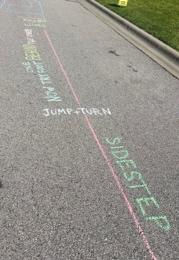Spina Bifida
- All Care Therapies

- Aug 25, 2022
- 2 min read

What is Spina Bifida?
Spina Bifida is the malformation of a small section of bones in the spine. Every year, approximately 1,400 births are affected by Spina Bifida. The severity of complications largely depends on the type, size, and location of Spina Bifida. Prior to birth, physicians can usually detect Spina Bifida through the use techniques such as MSAFP, ultrasound, or amniocentesis.
Types of Spina Bifida:
Three types of Spina Bifida exist and each type, ranging from mild to severe, present with different complications.
· Occulta: The mildest and most common type of Spina Bifida. This occurs when bones in the spinal column are malformed. This type is often discovered by accident through x-ray imaging and very rarely causes symptoms or disabilities. The reason for the name is because “occulta” means “hidden.”
· Meningocele: The second type of Spina Bifida, is when a sac of spinal fluid is exposed through the spinal column. This indicates that the spinal column bones in that location are malformed, allowing the sac to protrude. The skin of this area can either be covered by skin or exposed. Fortunately, Meningocele presents with very minor symptoms.
· Myelomeningocele: This is the third and most severe type of Spina Bifida. Similar to meningocele, this is when the sac contains a portion of the spinal cord of nerves. The opening is often closed before the baby is born or directly after. Symptoms and signs often include brain structure changes, leg weakness, and trouble with bowel control. Frequent follow-ups with physicians are required to prevent potential complications and maximize quality of life.
Complications:
One important thing to note is that the lower Spina Bifida presents on the spine, the less severe complications appear. Some of the complications that are seen include:
· bowel and urinary dysfunction
· leg weakness, mobility concerns
· decreased sensation of the skin
· clubfoot, abnormally curved spines
How can a PT help?
Children with Spina Bifida each have specific and unique needs depending on the type they have. The majority of children will benefit from Physical Therapy targeting the most common issues, such as lower leg weakness and motor control/coordination. Recommendations for specific equipment and prescriptions for exercises will also help the child maintain their ability to get around while addressing any additional factors that may appear during their time in physical therapy.
It is important to remember that what might work for one child may not be effective for another. This is why there are no general guidelines outlining exercise protocols or treatment plans. The best approach to addressing complications is to make an appointment with us so that we can learn about your child’s specific needs while creating the ideal exercise prescription for them.
References
1. Spina Bifida Fact sheet. National Institute of Neurological Disorders and Stroke. https://www.ninds.nih.gov/Disorders/Patient-Caregiver-Education/Fact-Sheets/Spina-Bifida-Fact-Sheet. Accessed September 20, 2021.
2. What is Spina Bifida? Centers for Disease Control and Prevention. https://www.cdc.gov/ncbddd/spinabifida/facts.html. Published September 3, 2020. Accessed September 20, 2021.




Comments